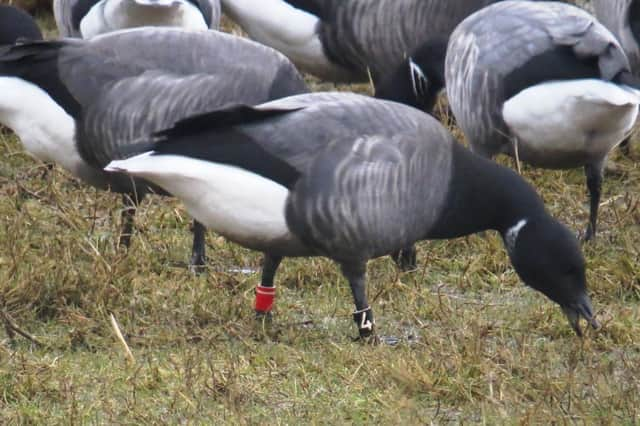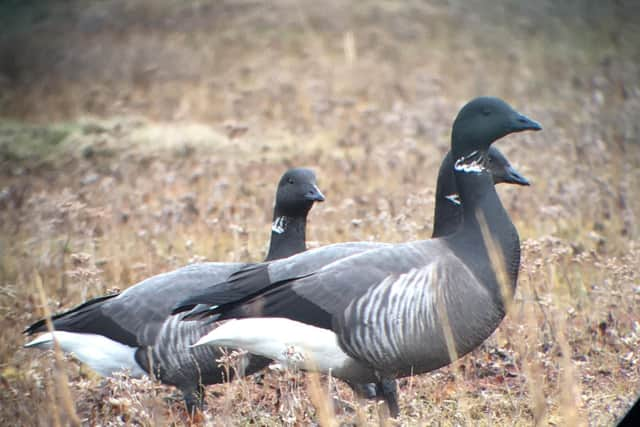Walk on the wild side: Watch out for Brent Goose


Kev Wilson, Nature Reserve Warden for the Lincolnshire Wildlife Trust at Gibraltar Point National Nature Reserve, has a few suggestions what to look out for if exploring the coast.
in his first Nature Diary, he take a 'Focus on Brent Goose':
Advertisement
Hide AdAdvertisement
Hide AdLarge sections of the Lincolnshire coast are very important for rare habitats and wildlife.


During the winter months thousands of wading birds and wildfowl rely on saltmarsh and mudflats as feeding grounds.
These birds have undertaken long migrations form their nesting grounds in Arctic regions stretching from Greenland across to Siberia.
Brent Goose is one of the key species. Nesting in Arctic Russia, they move to wintering grounds in the UK during October and November, leaving behind a frozen landscape where survival would be impossible.
Advertisement
Hide AdAdvertisement
Hide AdStudies involving the use of leg-rings have shown that the same birds return to the same sites every year.
The leg rings have a specific colour and letter code that can be read using a high-power telescope.
At Gibraltar Point, we await to see if the male bird with red ring and code R-N4 returns for another winter. Like many wildfowl, the Brent Geese migrate in family groups so we expect top see him with his partner and any juveniles that they have successfully raised that year.
Nesting success can be reduced by extreme arctic weather or the loss of eggs or chicks to predators such as Arctic Foxes or birds of prey. In years when there are high populations of small mammal prey such as lemmings, the Foxes may impact less on the geese.
Advertisement
Hide AdAdvertisement
Hide AdThe Wash and the Humber host internationally important numbers of Brent Geese during winter.
Flocks of up to 2000 can be seen at some sites. Around 800 can be seen at Gibraltar Point currently.The geese are strongly vegetarian and spend much time grazing saltmarsh grasses.
They rely on the saltmarsh habitat being in good condition and undisturbed. They will also feed inland on coastal pasture and arable fields.
They generally stay with us until mid to late March before heading back north-east. In most years,
Advertisement
Hide AdAdvertisement
Hide AdR-N4 has ben seen resting on the Dutch island of Terschelling before continuing his journey of around 4,500 kilometers to the Taimyr peninsula.
Brent Geese are quite a noisy species, both while feeding and whilst in flight.
The distinctive sound adds to the winter saltmarsh atmosphere along with the bubbling calls of Curlews and alarm calls of Redshank – the latter are two waders that visit from Scandinavia and Iceland.
At Gibraltar Point, the upper deck of the Visitor Centre offers a great view over the marshes and mudflats. Look for Brent Geese from here, along with birds of prey and Common Seals hauled out along the river bank.
Gibraltar Point Visitor Centre is open on Tuesdays to Sundays from 10am to 3 pm. The top deck can be closed in bad weather.